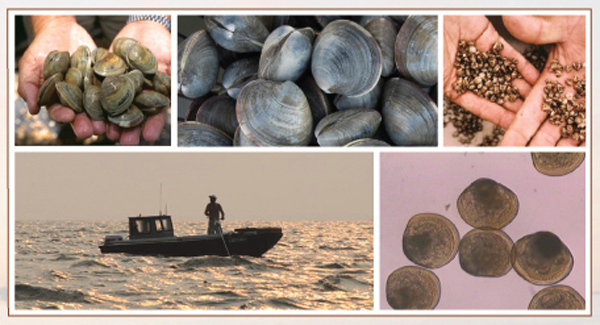Taking place on both coasts, the studies will analyze and predict the impact rising acidity will have on important fisheries species such as scallops and clams as well as the coastal economies that depend upon them.
September 19, 2012
As scientists continue to research ways in which the oceans are changing – and what these changes mean for fish populations, three new research projects will receive funding to examine the effects of ocean acidification on fisheries, and the coastal economies that depend upon them.
Ocean acidification occurs when the ocean absorbs carbon dioxide from the atmosphere, making it more acidic. Species as diverse as scallops and coral are vulnerable to ocean acidification, which can affect the growth of their shells and skeletons.
The grants, totaling nearly $1.6 million over three years, will go to:
- Woods Hole Oceanographic Institution: $682,000 to understand the connection between fluctuations of carbon dioxide levels and ocean scallop populations, harvest and economic conditions;
- The State University of New York at Stony Brook: $533,000 to examine bay scallops and hard clams to determine acidification’s effects on each species and identify the most vulnerable regions of estuaries; and
- The University of Washington: $374,000 to study a large climate model with fish populations and economic models in order to predict ocean conditions and economic effects.
“Efforts to estimate the effect of ocean acidification on fishery populations will be valuable to our own work,” said Jonathan Hare, oceanography branch chief of NOAA’s Northeast Fisheries Science Center. “The goal is to incorporate the effects of ocean acidification into advice provided to the regional fishery management councils.”
The monetary value of scallops and clams both as seafood and for their ability to clean the water surrounding them is in the billions of dollars annually, according to a NOAA study. Knowing how increased acidity will affect shellfish and the communities who depend on them will help resource managers develop strategies to prepare for the future.

Atlantic scallop. (Credit: NOAA)
Valuable Pacific fish, such as sablefish, hake, and rockfish depend upon food sources vulnerable to more acidic seas. But scientists know less about how ocean acidification can affect the whole ecosystem surrounding these species. Some species may be more susceptible to ocean acidification than others, and these species might need closer management. Knowing where and when any effects might be felt is also important to developing fishery management plans.
NOAA works closely with regional fishery management councils as fishery management plans are developed, and then reviews, approves, and implements the plans. This research will help the councils plan for future effects of ocean acidification.
These awards are managed by the NOAA’s National Centers for Coastal Ocean Science and Ocean Acidification Program. These research awards complement ongoing work within NOAA that monitors acidification and determines its effects on marine populations.
NOAA’s mission is to understand and predict changes in the Earth’s environment, from the depths of the ocean to the surface of the sun, and to conserve and manage our coastal and marine resources. Visit us atwww.noaa.gov and join us on Facebook, Twitter and our other social media channels.
